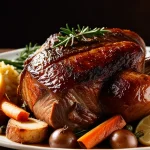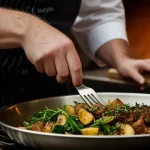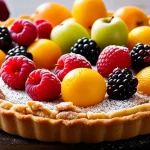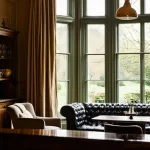Historical Foundations Shaping Modern UK Women’s Fashion
Understanding the roots of today’s trends
The history of UK women’s fashion reveals a dynamic evolution deeply tied to social currents. During the Victorian era, fashion was marked by corsets, full skirts, and an emphasis on modesty, shaping a silhouette still echoed in contemporary styles favoring structured shapes and elaborate detailing. Transitioning to the Edwardian period, women’s style evolution introduced lighter fabrics and softer lines, signaling a move toward comfort that modern designers frequently revisit.
Also to see : How Has UK Women’s Fashion Adapted to Seasonal Changes?
The Roaring Twenties brought a revolutionary shift: flapper dresses, shorter hemlines, and an embrace of freedom in dress reflected wider cultural changes. This era’s influence on today’s fashion is clear in the frequent comeback of relaxed fits and playful embellishments. Post-war Britain saw practicality intersect with elegance, as rationing influenced simpler cuts but also innovative use of materials—principles aligned with the current sustainable fashion movement.
Throughout these eras, historical influence is often linked to social change and iconic figures who redefined femininity through clothing. Their impact persists, guiding the continuous transformation of women’s wardrobes in the UK. This intricate tapestry of style evolution underscores how history shapes modern British fashion in profound ways.
Additional reading : How Can UK Women’s Fashion Evolve to Encourage Inclusivity?
Revivals and Reinterpretations of Vintage Styles
Vintage fashion trends continue to captivate designers and consumers alike, fueling a powerful wave of retro revivals across the industry. Styles from the 1960s mod scene, with its sharp lines and bold colors, have made a striking comeback, while the free-spirited 1970s boho aesthetic returns in flowing fabrics and earthy tones. Even the clean, understated 1990s minimalism has found renewed appreciation, celebrated for its simplicity and versatility.
Modern fashion embraces reinterpretation by blending these vintage elements with contemporary techniques and materials. High street brands and luxury designers alike draw inspiration from past decades, reimagining them in ways that resonate with today’s tastes. This includes using sustainable fabrics or integrating innovative textiles that enhance comfort and durability.
This fluid dialogue between eras results not just in replication but creative evolution—a vintage touch meets modern innovation. Retro revivals keep fashion fresh while honoring history, offering consumers familiar yet exciting choices that bridge generations stylishly and thoughtfully.
Recurring Themes and Iconic Designers in UK Fashion
UK fashion is defined by iconic British designers whose influence remains deeply rooted in apparel choices today. Among recurring fashion motifs, three stand out: precise tailoring, bold florals, and rebellious punk-inspired looks. These elements reflect not only aesthetics but also cultural attitudes, showcasing a blend of elegance, femininity, and countercultural edge.
Vivienne Westwood, a pivotal figure, revolutionized punk fashion with her daring use of tartans, safety pins, and provocative tailoring. Her legacy in women’s wear challenges traditional norms, making her collections a continuous source of inspiration for modern designers. Similarly, Mary Quant embodies youthful vibrancy through vibrant prints and daring hemlines, pioneering the mini skirt as a symbol of female empowerment.
Alexander McQueen’s theatrical runway shows combined meticulous tailoring with a gothic and romantic sensibility, turning fashion into performance art. His designs perpetuate vintage ideas while boldly reinterpreting them, influencing runway collections worldwide.
Through these designers, UK fashion maintains a dialogue between past and present, transforming recurring motifs into contemporary statements that resonate on the global stage. This dynamic interplay ensures the legacy in women’s wear remains strong and relevant.
Comparing Past and Present: Visual and Textual Case Studies
Exploring fashion trend comparisons reveals how historical styles influence modern wardrobes. Take the tea dress, for example. Originating in the early 20th century as a casual yet elegant garment, its revival today embraces lighter fabrics and bolder prints, while maintaining the silhouette’s feminine appeal.
Similarly, the trench coat has evolved from a military necessity to a versatile fashion staple. Once designed for functionality during wartime, it now features diverse cuts and innovative materials, balancing tradition with contemporary taste.
Tartan patterns illustrate how style evolution examples transpose cultural heritage into new contexts. Originally linked to Scottish clans, tartan today appears in streetwear and high fashion, blending old significance with modern flair.
Media, film, and celebrities play an undeniable role in popularising throwback trends. Iconic red carpet moments and period dramas spark renewed interest, influencing designers and consumers alike. This dynamic interplay between past and present fashions underlines that style continually reinvents itself, proving that historical vs. modern fashion comparisons are more than nostalgia—they’re a dialogue across time.




